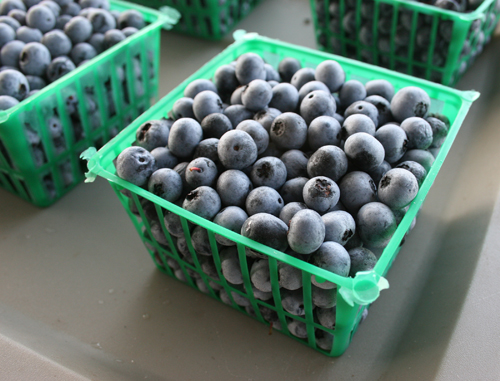University of Georgia researcher Gary Hawkins looks at rotting fruits and vegetables differently than most people. Where they may see useless balls of moldy fuzz, he sees fuel.
As they break down, fruits and vegetables can be harvested for methane, or natural gas, he said. This gas can be used to heat greenhouses, shops or homes. It can also fuel electricity-producing generators or can be used to heat areas where vegetables need to be cured.
Giving fruit and vegetable growers and packing houses the ability to produce their own natural gas – both easily and affordably – is one of Hawkins’s goals. The other is to see waste put to good use.
“If we can get the process down, packers and producers should be able to make money off of it,” said Hawkins, a pollution prevention and alternative energy specialist with the UGA College of Agricultural and Environmental Sciences.
He’s got plenty of produce to work with. In Georgia, fruit and vegetable growers harvested 390 million pounds of produce in 2007, according to the National Agricultural Statistics Service. Up to 8 percent, or 31.2 million pounds, of that was discarded at packing houses.
And packing houses aren’t the only sources for produce. About half of the fruits and vegetables grown in Georgia each year are left in fields after the harvest ends.
Testing produce
Not all produce is created equal when it comes to methane-producing potential. On the vegetable side, onions have the highest energy density and have the potential to produce the most methane. On the fruit side, blueberries are the winners from those tested by Hawkins.
Georgians grew 13,839 acres of onions in 16 counties in 2007, according to the Georgia Farm Gate Value Report. They grew 10,664 acres of blueberries that same year.
The energy from the onions discarded by packing houses in Georgia each year is enough to provide electricity for 15 houses annually.
Despite their high standing as one of the top three vegetables in the world, tomatoes were a disappointment when it came to their fuel-producing potential. The energy from all the discarded tomatoes in Georgia each year would only power one house annually.
The process
Hawkins uses a process called anaerobic digestion to get fruits and vegetables to give up their fuel. Anaerobic digesters are containers that are void of oxygen and contain bacteria, kind of like large stomachs where fruits and vegetables decompose and methane forms.
Hawkins has to be careful how much produce he puts in the anaerobic digesters.
“We will kill it if we put too much in there,” he said. “A pH below 4.5 kills the system. The bacteria get obese, overeat and kill themselves.”
Anaerobic digesters have to be fed a steady stream of produce or the bacteria in them die. Changing the amount or kind of material fed to the digesters frequently can cause too much acid, and the increased acid level will kill the bacteria.
Besides researching fruits and vegetables, Sarahi Garcia, one of Hawkins’ graduate students, is working with CAES engineer K.C. Das and UGA microbiologist William B. Whitman to find better specific anaerobic bacterium. She is looking at bacteria found in cow rumen, the Okefenokee Swamp, ponds and botanical gardens.
“If she can isolate a better bacterium, we can start the digester doing what it’s supposed to be doing faster,” Hawkins said.
Smell control
“If a digester goes bad, it smells real bad,” he said.
A well-run digester has an odor, but it’s not overwhelming. And it’s definitely better than the smell of produce rotting in the field.
“Digesters are a good way to reduce odor around farms,” Hawkins said.
They’re also a good way to reduce rotten-produce runoff, which can pollute waterways if not cared for properly.
Eventual goals
Hawkins imagines a day when there’s the potential to have digesters in areas where produce fuel sources are plentiful. The sources may include high-density packing houses or a combination of packing houses and other organic waste like yard debris.
With culled fruits and vegetables flowing in all year, they’d have a steady stream to feed their anaerobic digesters – and a steady stream of heat and electricity to power their packing houses.




